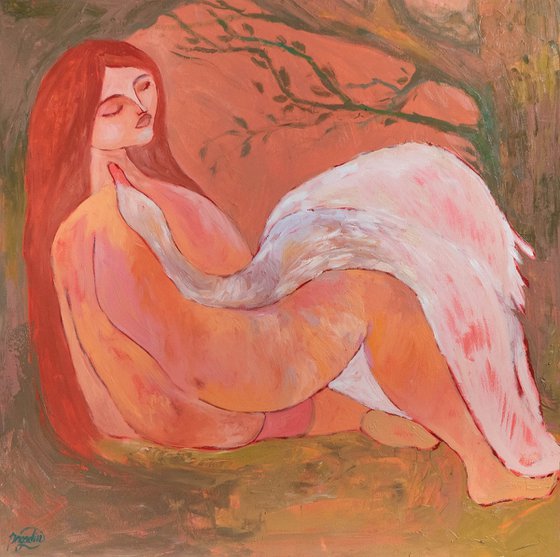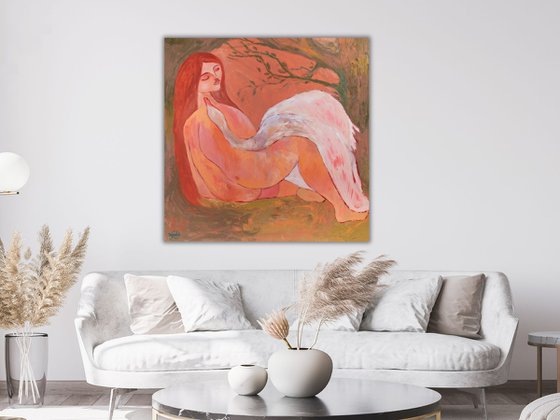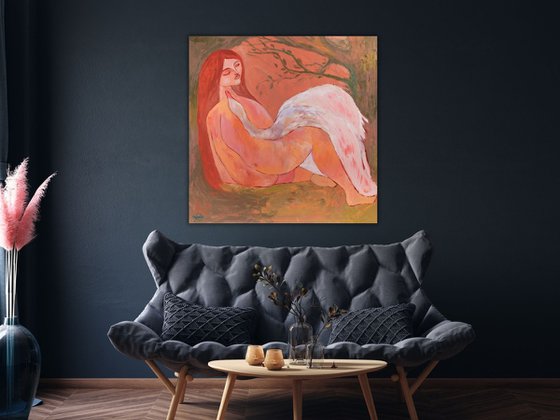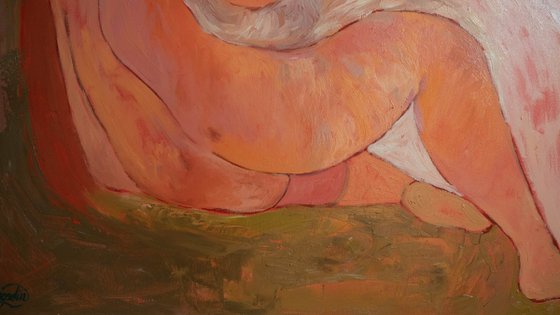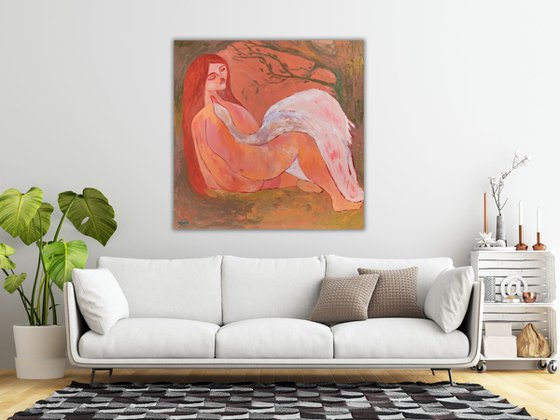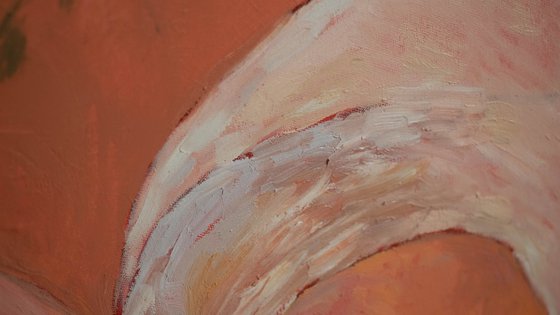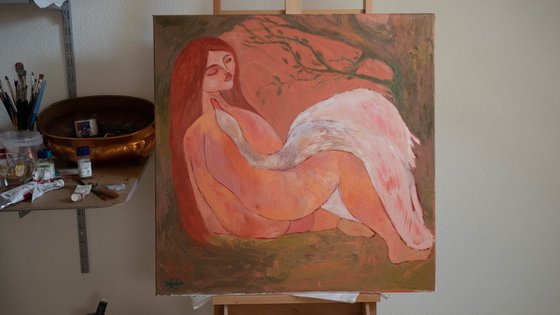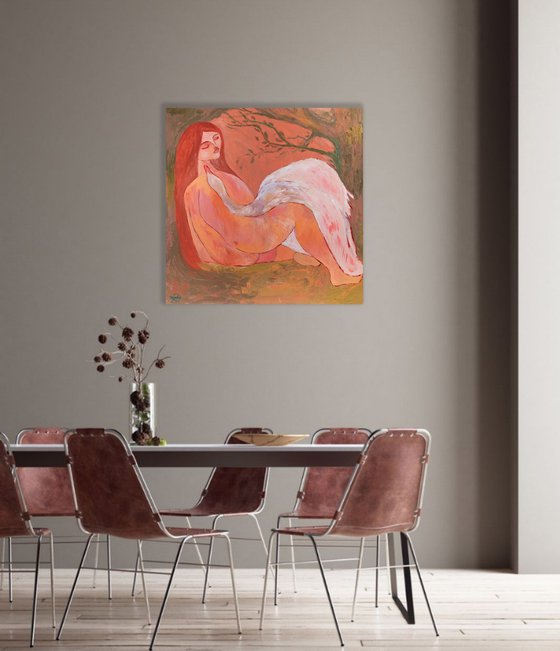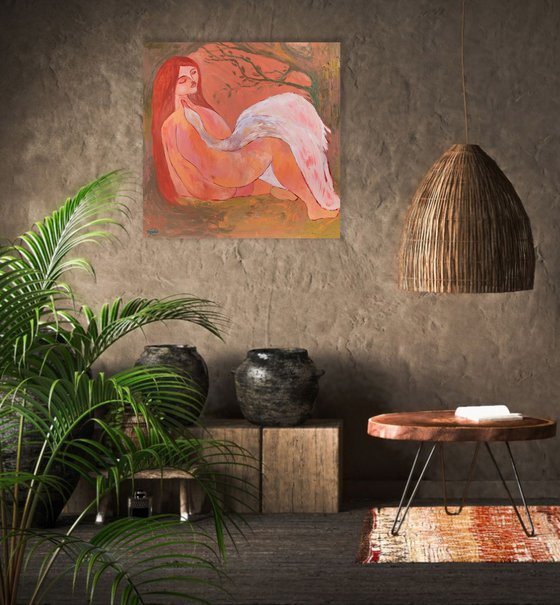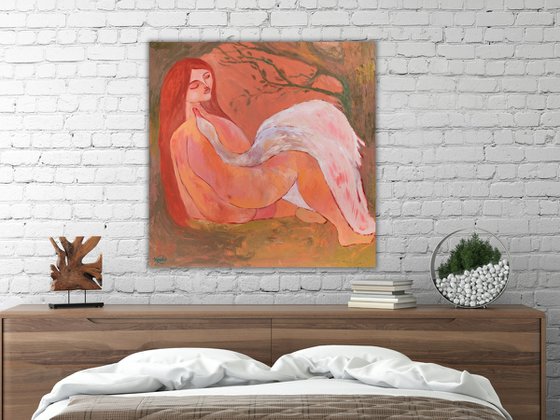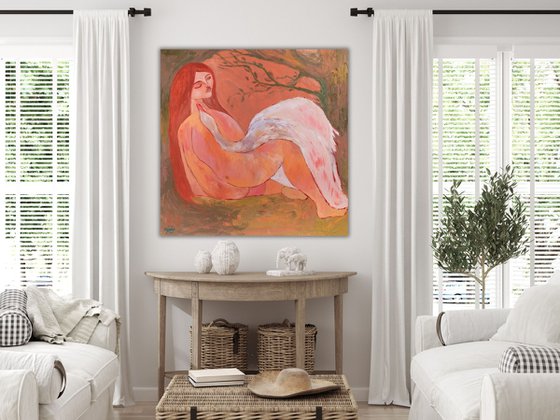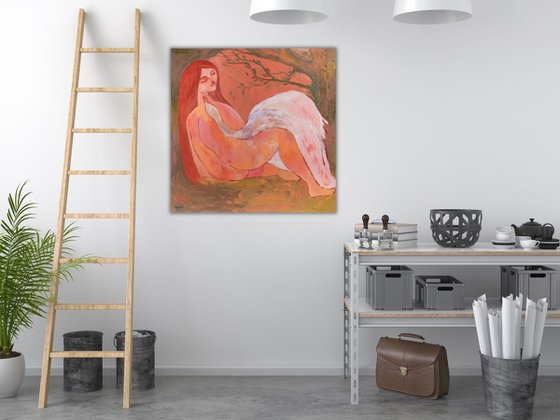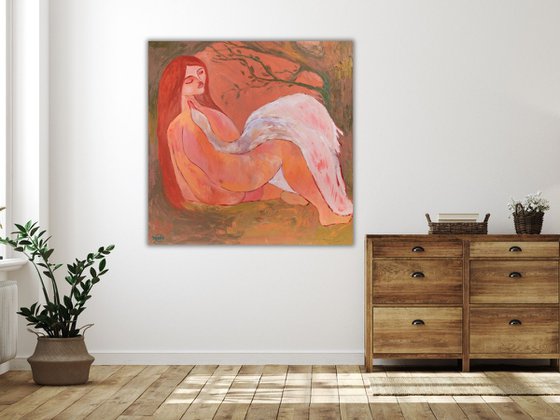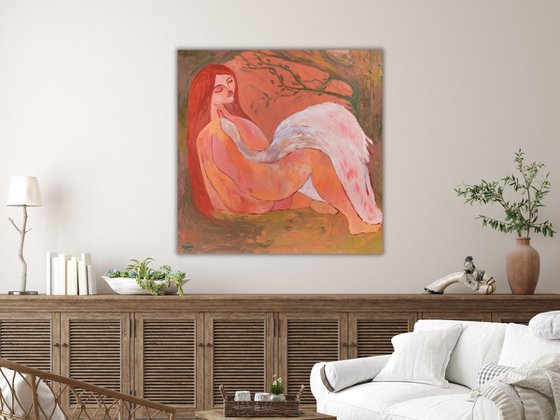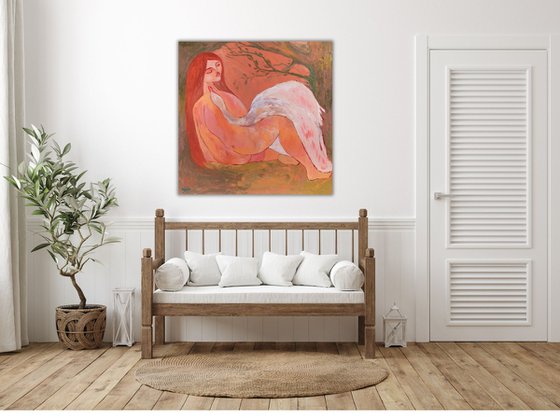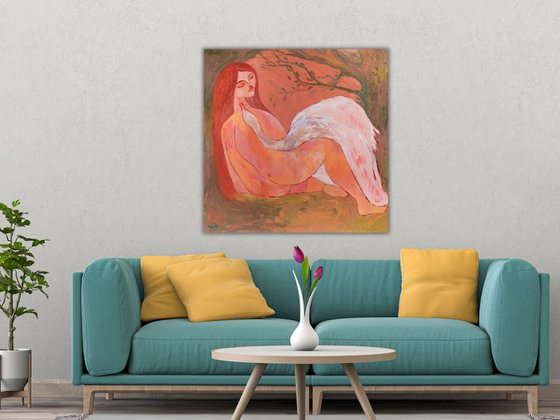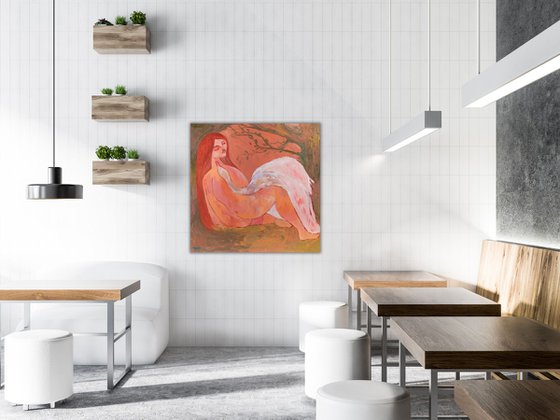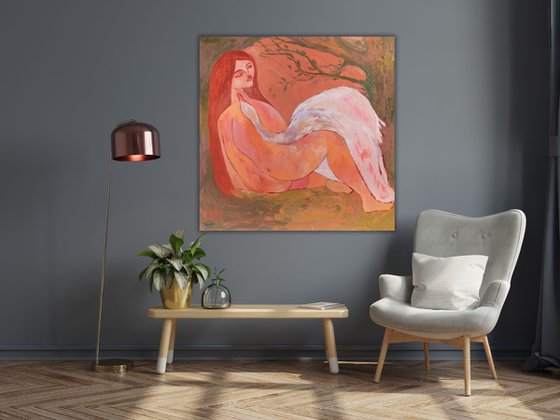- By medium
- By subject
- By budget
- Sales
- Gift cards
- Discover all art
- Artists
- Editors’ picks
- Ideas
Original artwork description:
ABOUT THE ARTWORK
This evocative piece, "Leda and the Swan," draws inspiration from the rich tapestry of Greek mythology, reimagining the classic tale through a symbolist lens. The painting captures the moment of Leda's encounter with Zeus in the guise of a swan, a narrative imbued with themes of transformation and the intersection of the divine with the mortal. The use of oil paints grants a tactile depth to the image, with the artist's brushstrokes lending a palpable texture to the swan's feathers and the warmth of Leda's skin.
The color palette is intentional, with earthen tones that suggest a return to nature and the myth's grounding in ancient storytelling. The artist's style melds realism with a dreamlike quality, reflecting the surreal nature of the myth while also inviting personal interpretation. Leda's expression is one of serene resignation, her closed eyes a possible nod to the inward reflection this myth has provoked through the ages. This piece is not only a visual recounting but also an invitation to ponder the complexities of myth and its relevance in contemporary discourse.
PERICHORESIS SERIES
In her series of works, Dasha uses the term "perichoresis" (Dr.-Greek περιχώρησις - "interpenetration"), a theological term meaning the mutual penetration of divine parts into each other, for the title to describe a unique union that does not imply mixing or merging, but emphasizes an inseparable and inseparable unity.
In her work, Daria explores the theme of a new sexuality, deliberately choosing a term from theological treatises for her series of works. With this provocative gesture, she protests against the dictates of religion, the manipulation and pessimization of human sexual expression and corporeality by the church. "Perichoresis" for her is a beautiful and complex term describing the fusion of the divine. Having grown up in the Protestant tradition within Orthodox society, Daria states the separation of sexuality from divinity common in all these religions, while she sees sexuality as the brightest manifestation of divinity, beauty and sublimity.
The artist notes that Christian culture has invested the image of the female body with a narrative of pornographic tension, while at the same time presenting paradise before the fall as a sexual paradise, a Garden of earthly pleasures. For the artist, sexual paradise is a safe environment, complete trust, acceptance, an opportunity to open up and discover the Other, an opportunity to learn to be loved and to love. An environment where fusion does not dissolve in the other person, but on the contrary strengthens the individuality of each person and enriches each other.
Thus the artist through the term "perichoresis", which means interpenetration, fusion of individualities and even occurs in Christian treatises as a round dance of love, reminds that the division into high and low in love is artificial, and overcoming this division can make life more beautiful. The characters in her paintings are immersed in the enigmatic space of love, and sometimes ironic scenes that balance the degree of sublimity with encounters with anthropomorphic partners.
Materials used:
Oil
Tags:
#conceptual #modern artist #woman artist #large painting #red painting #naive art #naive artwork #woman artworkLeda and Swan (2022) Oil painting
by Dasha Pogodina
4 Artist Reviews
£1,290.56
- Oil painting on Canvas
- One of a kind artwork
- Size: 80 x 80 x 2cm (unframed) / 80 x 80cm (actual image size)
- Ready to hang
- Signed on the front
- Style: Impressionistic
- Subject: People and portraits
Loading
Original artwork description
ABOUT THE ARTWORK
This evocative piece, "Leda and the Swan," draws inspiration from the rich tapestry of Greek mythology, reimagining the classic tale through a symbolist lens. The painting captures the moment of Leda's encounter with Zeus in the guise of a swan, a narrative imbued with themes of transformation and the intersection of the divine with the mortal. The use of oil paints grants a tactile depth to the image, with the artist's brushstrokes lending a palpable texture to the swan's feathers and the warmth of Leda's skin.
The color palette is intentional, with earthen tones that suggest a return to nature and the myth's grounding in ancient storytelling. The artist's style melds realism with a dreamlike quality, reflecting the surreal nature of the myth while also inviting personal interpretation. Leda's expression is one of serene resignation, her closed eyes a possible nod to the inward reflection this myth has provoked through the ages. This piece is not only a visual recounting but also an invitation to ponder the complexities of myth and its relevance in contemporary discourse.
PERICHORESIS SERIES
In her series of works, Dasha uses the term "perichoresis" (Dr.-Greek περιχώρησις - "interpenetration"), a theological term meaning the mutual penetration of divine parts into each other, for the title to describe a unique union that does not imply mixing or merging, but emphasizes an inseparable and inseparable unity.
In her work, Daria explores the theme of a new sexuality, deliberately choosing a term from theological treatises for her series of works. With this provocative gesture, she protests against the dictates of religion, the manipulation and pessimization of human sexual expression and corporeality by the church. "Perichoresis" for her is a beautiful and complex term describing the fusion of the divine. Having grown up in the Protestant tradition within Orthodox society, Daria states the separation of sexuality from divinity common in all these religions, while she sees sexuality as the brightest manifestation of divinity, beauty and sublimity.
The artist notes that Christian culture has invested the image of the female body with a narrative of pornographic tension, while at the same time presenting paradise before the fall as a sexual paradise, a Garden of earthly pleasures. For the artist, sexual paradise is a safe environment, complete trust, acceptance, an opportunity to open up and discover the Other, an opportunity to learn to be loved and to love. An environment where fusion does not dissolve in the other person, but on the contrary strengthens the individuality of each person and enriches each other.
Thus the artist through the term "perichoresis", which means interpenetration, fusion of individualities and even occurs in Christian treatises as a round dance of love, reminds that the division into high and low in love is artificial, and overcoming this division can make life more beautiful. The characters in her paintings are immersed in the enigmatic space of love, and sometimes ironic scenes that balance the degree of sublimity with encounters with anthropomorphic partners.
Materials used:
Oil
Tags:
#conceptual #modern artist #woman artist #large painting #red painting #naive art #naive artwork #woman artwork14 day money back guaranteeLearn more
